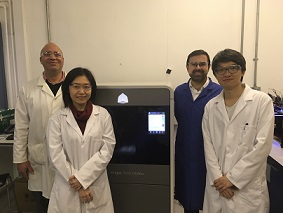
This work is part of the University’s Centre for Advanced Separations Engineering (CASE) and is the first time the properties of different 3D printing techniques available to membrane production have been assessed.
Membranes are a semi-permeable selective barrier which separates the molecules in a mixture within a gas or liquid into two streams. A key example of is the separation of salt from water for desalination using reverse osmosis membranes.
The use of 3D printing in separation membrane engineering is relatively new. Also known as Additive Manufacturing, 3D printing has the ability to create almost any geometrically complex shape or feature in all kinds of different materials across different scales. It has applications in various areas including medicine, art, manufacturing and engineering.
Membranes are currently restricted mainly to tubular/hollow fibre and flat surface configurations due to the limitations of current manufacturing processes. As a result, the precision of present membranes are limited in successfully separating certain properties.
The use of 3D printing techniques offers novel membrane preparation techniques that are able to produce membranes of different shapes, types and designs, which can be more precisely designed, fabricated and controlled than any other membrane fabrication method currently available.
The paper, which evaluates existing knowledge of the advantages and drawbacks of different 3D printing methods as well as the potential developments of membrane production, identifies a promising future in which 3D printing will enable original and far more accurate membranes.
Entitled ‘Perspective on 3D printing of separation membranes and comparison to
related unconventional fabrication techniques’, the paper, which is published in the Journal of Membrane Science, can be viewed online at: www.sciencedirect.com/science/article/pii/S0376738816304215





